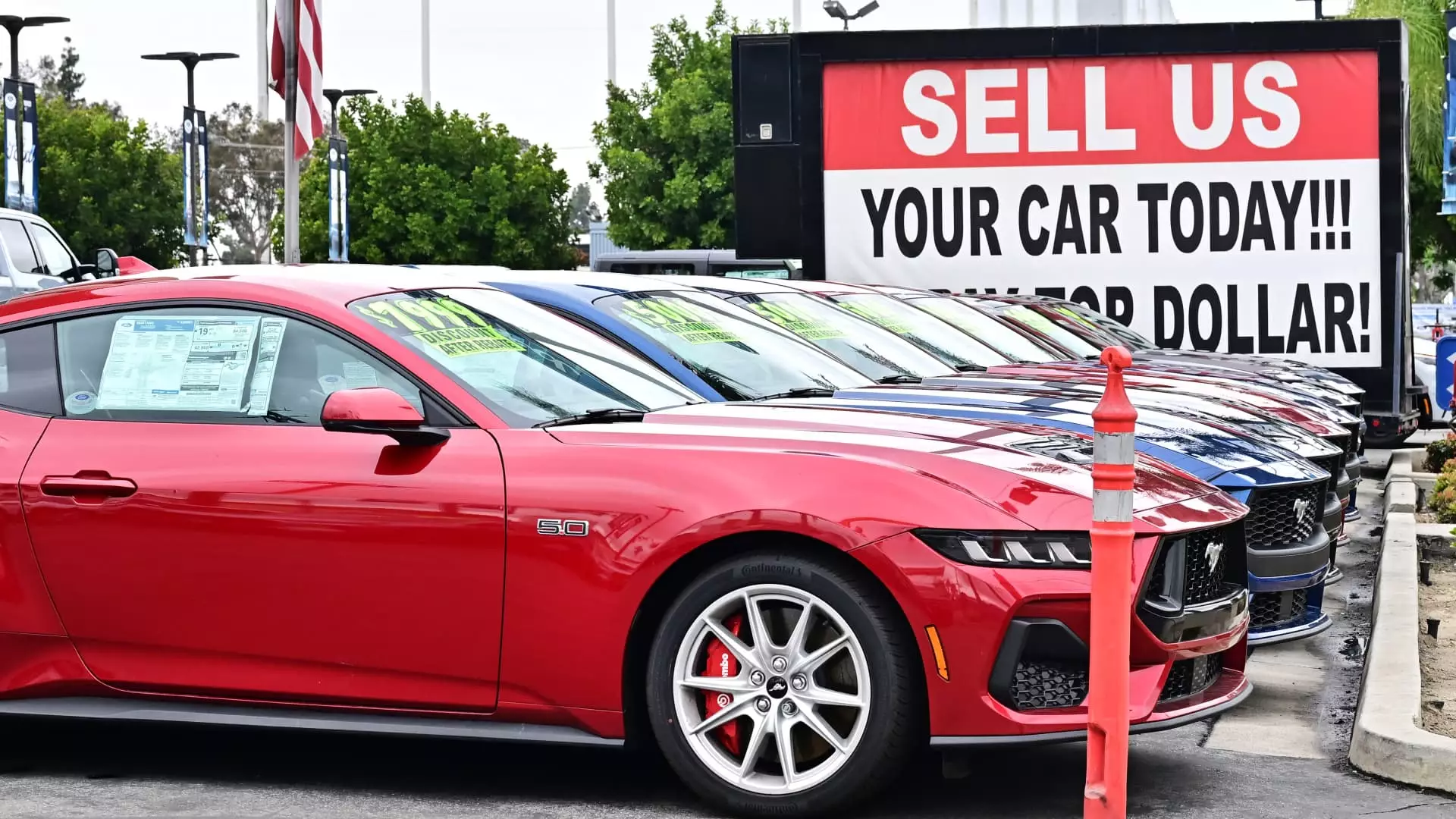The used vehicle market has experienced unsettling fluctuations recently, and a closer examination reveals serious implications for consumers. As reported by Cox Automotive, used vehicle prices witnessed a slight decline of 1.5% from April to May, following an atypically high peak in April. While this might suggest a minor relief for buyers, the reality is more alarming — the prices remain 4% higher than they were just a year ago. This ongoing increase, despite minor retreats, hints at a precarious market that is not showing signs of stability.
The Tariff Ripple Effect
One troubling factor contributing to the heightened prices is the repercussions of President Trump’s tariffs on imported vehicles. While direct tariffs on new cars and parts may not impact used car sales, the interconnected nature of the automotive market means that any rise in new vehicle costs can ripple through to the used sector. For the average consumer, understanding these nuances becomes essential but also frustrating. A robust market for new vehicles often leads to inflated prices for used cars as demand shifts, raising costs that consumers typically foot the bill for when purchasing pre-owned vehicles.
The Consumer Dilemma
Moreover, it’s crucial to examine the psychological state of consumers navigating this market. Many individuals are reluctantly postponing their vehicle purchases, hoping to avoid price hikes. The fear of tariffs and their cascading effects makes the prospect of buying a vehicle more daunting than ever. This sentiment can lead to a vicious cycle wherein potential buyers feel compelled to purchase a vehicle out of urgency rather than need. As a result, the demand for used vehicles remains deceptively strong, despite continuous price escalations that seem unjustifiable.
Inventory Shortages: A Chronic Condition
Adding to the complexity of the situation is the low inventory of used vehicles, currently standing at around 2.2 million — substantially below historical norms. With many consumers choosing to hold onto their vehicles longer, the market is effectively squeezed. Compounding this issue are ongoing disruptions in production attributable to the COVID-19 pandemic, which have diminished the flow of used vehicles into the market. These challenges create what one might consider a triad of misfortune for consumers: rising prices, low inventory, and a hesitance to purchase due to financial unpredictability.
An Industry in Transition
From a broader perspective, the automotive industry is at a crossroads. While the stabilization of used vehicle prices has been touted as a positive turn, it masks a lurking anxiety among consumers who feel cornered by an uncertain market. Retail used vehicle sales decreasing by 3% from April to May highlights this discomfort, raising questions about the sustainability of the current market dynamics. What remains evident is that the interplay between various market factors has bred an environment where the average consumer is caught in a bind, and that can only foster dissatisfaction and distrust in the larger economic landscape.
In this landscape, one can only hope that clearer communication and more stable pricing structures evolve. It’s imperative for stakeholders to recognize the profound disconnect between production rates and consumer needs, or the used vehicle market may soon find itself spiraling into a more severe crisis.

